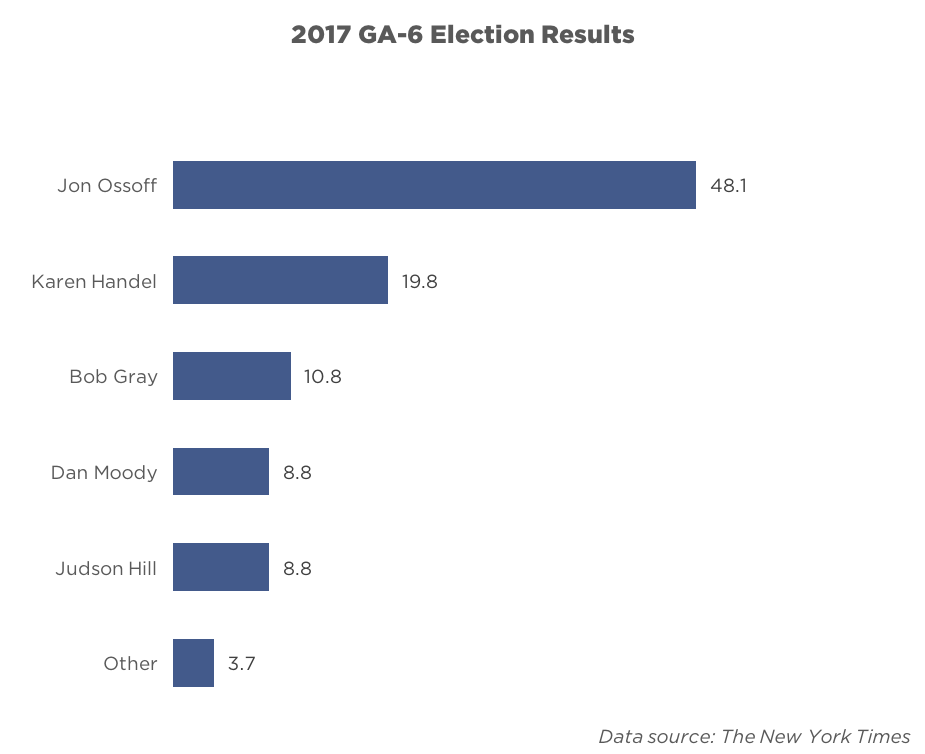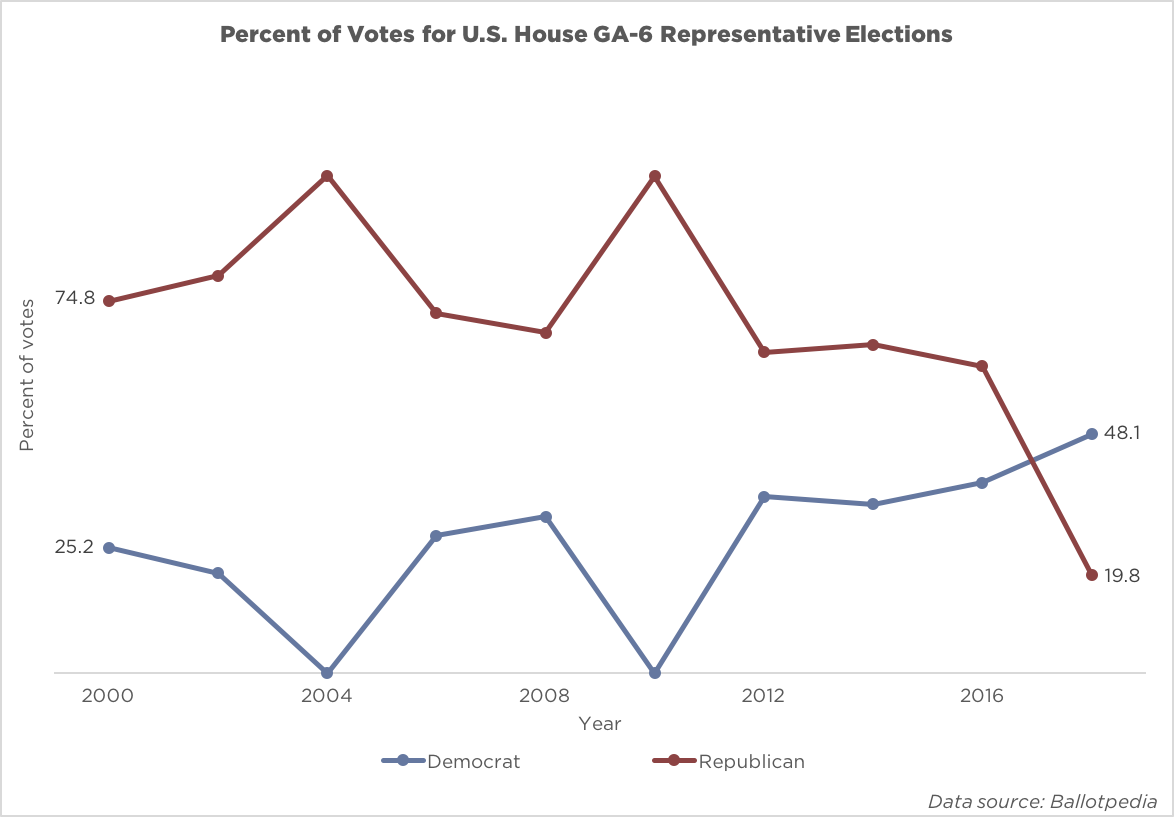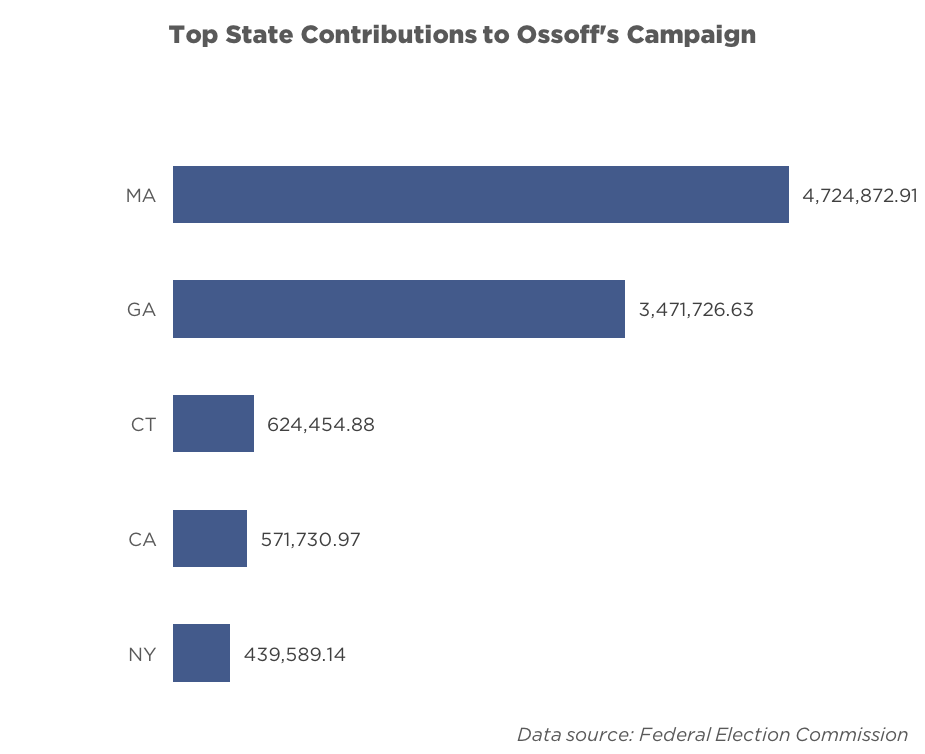On Tuesday, April 18, 2017, residents of Georgia’s Sixth District headed to the polls to elect their next representative in Washington D.C. After Tom Price was sworn in as the U.S. Secretary of Health and Human Services in February, the district held a special election to determine his replacement. Enter Jon Ossoff, the only Democrat running in the majority-Republican district. The election offered the Democrats’ their first victory opportunity since the presidential election.

In the end, Ossoff earned 48.1 percent of the votes, more than any other candidate.This result was surprising given Ossoff’s relative inexperience. While he has worked on Capitol Hill, he has never held public office before. In contrast, his opponents included the former Georgia Secretary of State Karen Handel, two former state senators, and a former city council member who represented a city in the sixth district. Though the odds seemed stacked against him, Democrats across the country cheered on and donated $8.3 million to the man running to “Make Trump Furious.”

Because Ossoff did not take more than 50 percent, he will face Handel, the runner-up, in a runoff in June. This election represents a momentous occasion for Democrats, who have historically performed poorly in this district. Since 2000, Democrats have lost every election to to Republican contenders. In 2004 and 2010, they failed to even nominate a candidate for the Congressional seat. This trend stretches back even further: only Republicans have represented Georgia’s Sixth District in the House since the Carter administration.
Why is this red district favoring a blue candidate? The recent election represented a chance for Democrats to prove that their resistance to the current administration is working. The day after the inauguration, an estimated 4 million people participated in Women’s Marches across the country. The Senate has been receiving at least 1.5 million calls per day as citizens try to make their voices heard. Democrats are counteracting the president’s policies.

Another example of Democrats’ national resistance is their financial support of Ossoff’s campaign. The HPR used the campaign’s most recent filings to the Federal Election Commission to aggregate how much money each state’s residents donated. The median contribution of a state to the campaign was $12,880, and all but three states (North Dakota, South Dakota, and Idaho) donated at least $1,000. The largest donation was from Massachusetts with $4,725,000 Georgia was a close second with $3,472,000. With the exception of Georgia, the states that contributed the most money—California, New York, Massachusetts, and Connecticut—are solidly Democratic. The large amount of out-of-state contributions shows that Georgia was a high-stakes election for the entire nation. It was a chance for Democrats around the country to prove that their resistance is working.
While Ossoff hasn’t quite won the seat, the Democrats can still count his strong performance thus far as an achievement. The party has yet to flip this seat since before the Carter administration, and has performed abominably against Republicans in recent elections. Ossoff’s performance, then, is even more impressive considering the district’s history. Given the national attention on the election, Democrats appear to be mounting a significant threat to Republicans in even the most conservative districts in the country. Now, the nation must wait until the runoff election in June to see if the resistance can maintain its momentum.
Image Credit: Flickr / ResistFromDay1 Copyright 2.0
